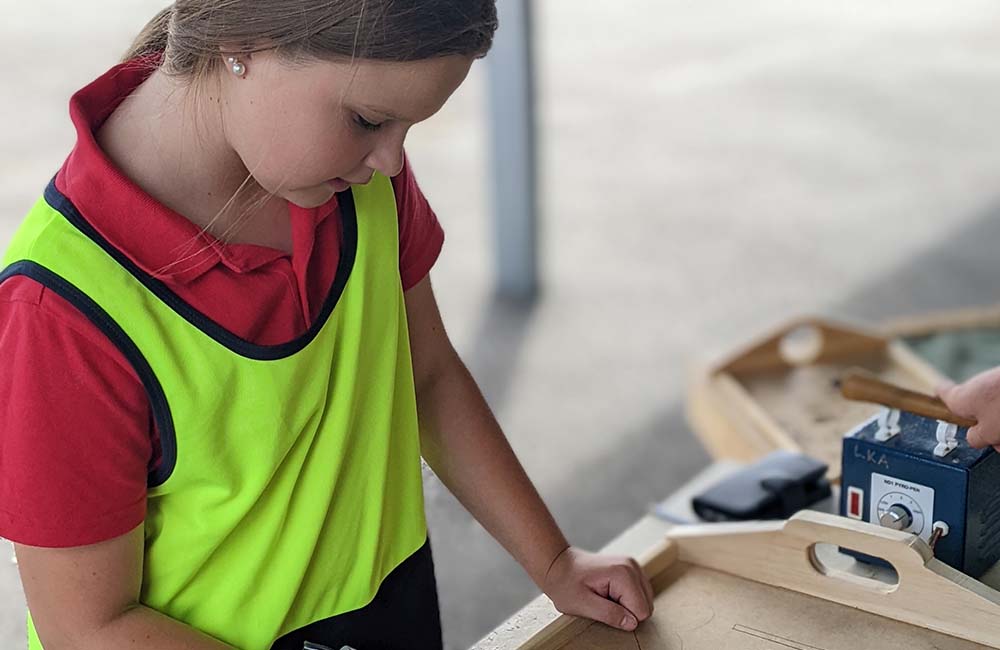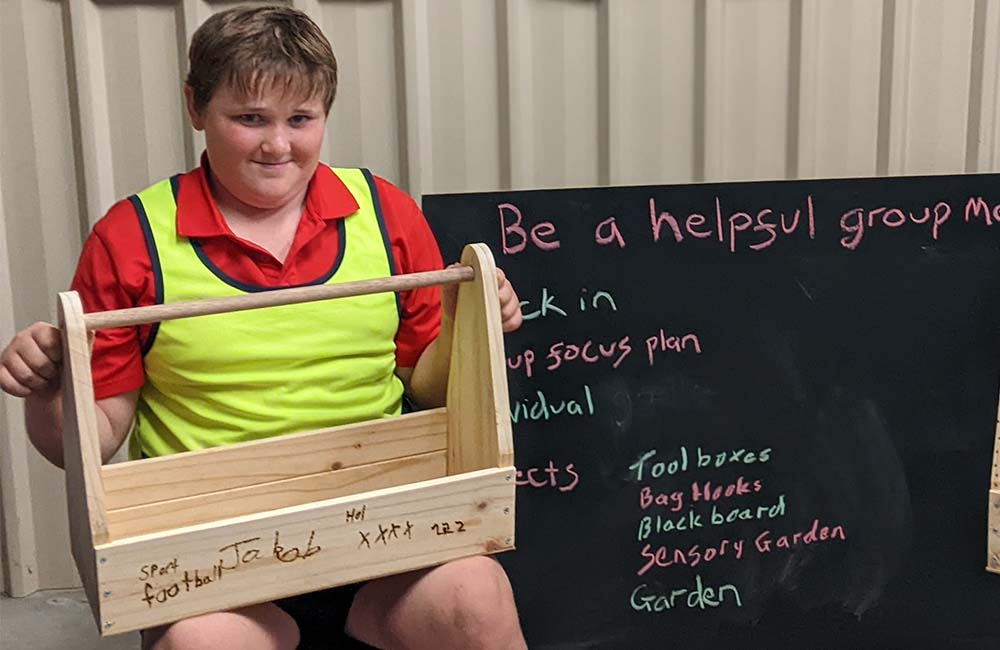A hands-on approach to student engagement
You’d be forgiven for thinking it strange that year 5 students might use hammers at school. You might also be surprised to know that the students outside the classroom won’t be reprimanded, but are in fact celebrated for their role in a new school program that has led to improved attendance, engagement and leadership skills.
The sight of students measuring up broken school equipment for repair has become commonplace between 11am and 3pm each Thursday at a Primary School in Tasmania. It’s all part of Hands on Learning (HoL), a program that supports the social and emotional development of young people through practical learning outside the classroom. While the school only began its partnership with HoL this year, Adam, the school principal, is already excited by the results.
“The wellbeing focus has made a significant impact on these students and their overall wellbeing,” he says.
The program has two distinct streams: Build, where students engage in maintenance and construction projects in a workshop, and Café, where they learn to cook a variety of different dishes. The first intake has involved 20 students - mostly from grades 5 and 6 - split evenly between Build and Café.

Millie building a wooden tray for students in the Café program
Photo: Hands on Learning
Millie, an 11 year-old student in the Build program, loves the hands-on nature of the work and the chance to produce things that can be enjoyed by others.
“I like the idea of doing practical Build activities” she says, “and I liked the idea of helping in building projects such as the Café serving tray, made out of wood, that then the Café students can use to serve their food.”
Jakob, another 11 year-old student in the Build program, also loves the opportunity to create things from scratch that can be used by the community.
“I like HoL and I want to do it more. I love fixing things and building projects from the start. Some projects that we have done so far are bag hooks, a game board, pulled a couch apart to replace old wood, café trays, toolboxes. My favourite was making the toolbox!” he says.

Jakob with the toolbox he made as part of the Build program.
Photo: Hands on Learning
For the school’s principal, there were three key reasons for partnering with HoL: to improve student engagement, to provide targeted learning opportunities, and to improve community engagement.
Early indicators suggest that the program is on track to meet these goals, with anecdotal reports of increased attendance, higher student satisfaction and improved student engagement. These findings align with independent analysis of HoL programs nationwide, which show significant improvements in student confidence, collaboration skills and school engagement.
While this Tasmanian school is just halfway through its first year of incorporating HoL into its curriculum, Adam is already developing a long-term vision for the program:
“We look forward to making it a long-term part of our school program. We are working towards getting out and doing more work in the community and building connections beyond the school grounds,” he says.
While the outside activities of HoL offer a chance to build engagement with the local community, for the students involved it’s about finding a way to enjoy school and build the confidence to tackle challenges.
“Focus plans that are part of our HoL wellbeing have helped me have a reminder on what I am trying to accomplish,” says Jakob, “HoL has made me feel more confident to give things a go.”
“I was nervous at the start because I was one of only two girls in the group of 10. I feel more comfortable now as I have gotten to know everyone a lot more, especially when we talk about our group and individual focus plans,” says Millie, “…this has helped me in my self-esteem.”